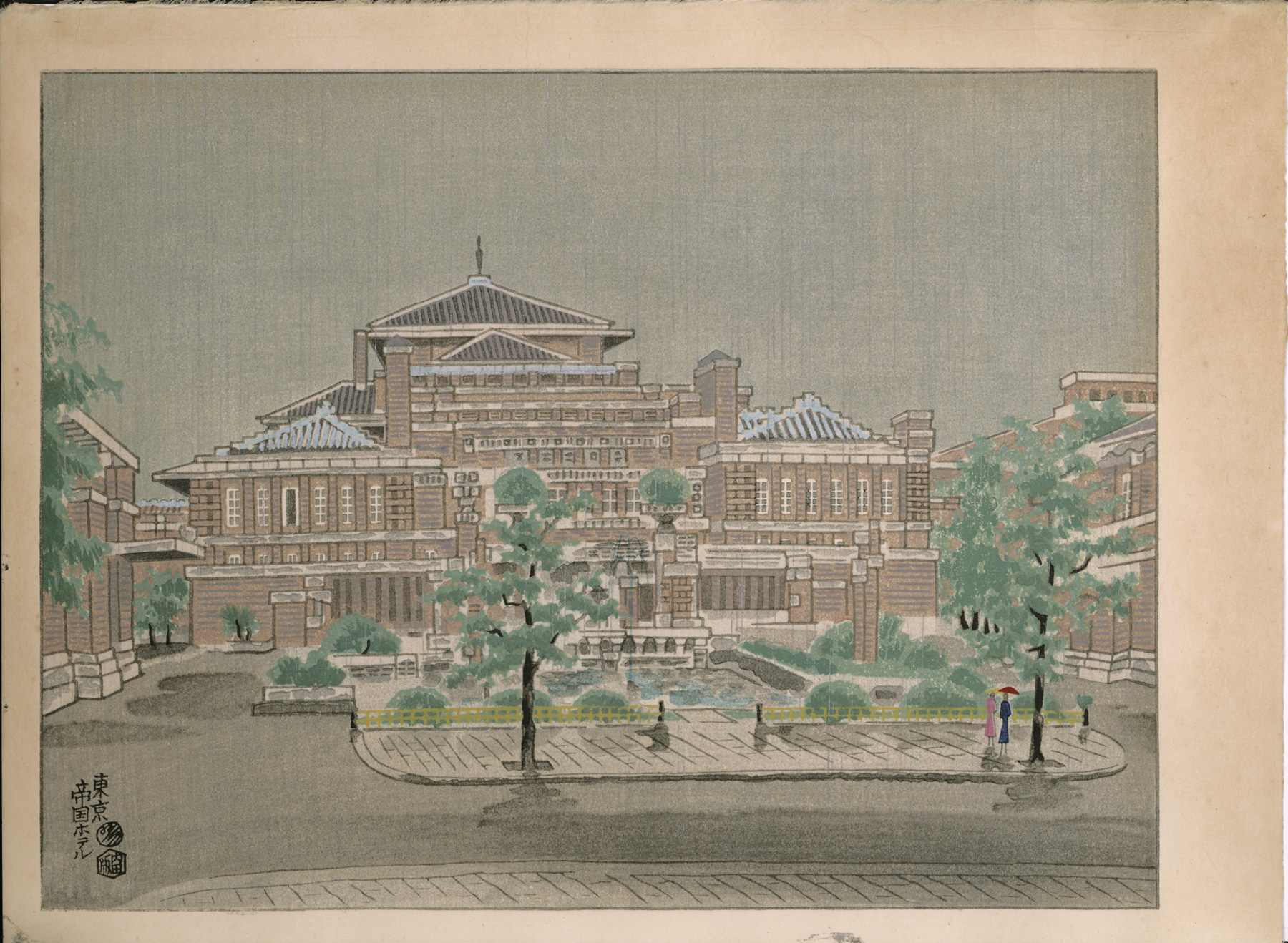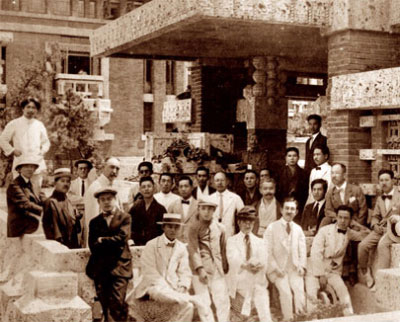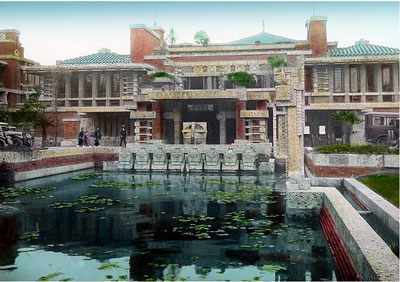About This Print
Torn down in 1968, Frank Lloyd Wright's Imperial Hotel, completed in 1923 and located near the Imperial Palace, is shown on a rainy, but calm, day. Careful viewing of the print reveals that silver mica ink was used to create the very fine vertical striations of rain distributed throughout the image.Frank Lloyd Wright's Imperial Hotel
Source: Low City, High City: Tokyo from Edo to TheEarthquake," Edward Seidensticker, Alfred A. Knopf, 1983, p. 275-276.
Frank Lloyd Wright was probably the most famous foreigner to come [to Tokyo] on business in the narrow sense of the term. His Imperial Hotel, the second one, under construction from 1915 to 1923, was formally opened in 1922 and finished just in time for the earthquake, which is survived so famously. Wright had a wide variety of troubles in the building, and left Japan after the formal opening without staying to view the completed structure. There seems to have been resentment at the presence of a foreign architect, and in this one sees a contrast between Taishō and the golden Meiji days of Conder. There was labor trouble, one more Taishō institution, and trouble with the underworld, which had strong roots in the building trades. The old Imperial was demolished by fire on the eve of the opening of the new. Wright’s original backers found in the fire their pretext for withdrawing. Their real reason was financial: the enterprise was running several times over the original budget.
The result of all the trouble was worth it. The old Imperial (as it would be called in the last years before its destruction in 1968, for by then yet a third – and now likewise departed – Imperial Hotel had been put up) was a fine building. It gave repose in the noisy heart of the city. Its famous performance in the earthquake did not, however, demonstrate that Wright’s principle of floating piles on mud was superior to that of driving them through to bedrock. The old Imperial settled badly, while more traditional buildings in the Low City, such as the Bank of Japan, did not. Some of the corridors came to have a wavy, rubbery look about them. Perhaps it had to go, but its departure, occasioned less by the unevenness of the floors and corridors than by the implacable urge to put valuable land to more intensive use, was the greatest loss that postwar Tokyo has had to endure. The façade may be viewed in Meiji Village near Nagoya (despite the fact that it is not Meiji Taishō). For those who know what once lay beyond that façade, it is less comforting than saddening.
Print Details
| IHL Catalog | #904 |
| Title | Tokyo Imperial Hotel 東京帝国ホテル |
| Series | Issued as a stand-alone print and as part of the four print series Famous Views of Tokyo in the Four Seasons 四季東京名所. |
| Artist | Kotozuka Eiichi (1906-1979) |
| Signature | not signed |
| Seal |  |
| Date | c. 1950s |
| Edition | unknown |
| Publisher |  |
| Impression | excellent |
| Colors | excellent |
| Condition | good - minor toning throughout |
| Genre | shin hanga (new print) |
| Miscellaneous | Uchida watermark upper left portion of print |
| Format | koban (half-aiban) |
| H x W Paper | 8 5/8 x 11 1/2 in. (21.9 x 29.2 cm) |
| H x W Image | 7 5/8 x 10 5/8 in. (19.4 x 27 cm) |
| Collections This Print | |
| Reference Literature | |




